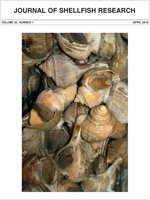The flat oyster Ostrea edulis (Linnaeus, 1758) is a commercially valuable species in Europe. The production of O. edulis natural spat has decreased in the past, and it is insufficient to meet demand. Thus, the importance of hatcheries in the production of oyster spat is increasing. The conditioning of O. edulis broodstock may be improved by manipulating several external factors such as temperature, food supply, and photoperiod; however, few studies have reported the effect of these parameters on O. edulis gametogenesis and conditioning. In this report, the combined effects of temperature and photoperiod on broodstock conditioning of O. edulis in winter were studied to provide a protocol that improves flat oyster conditioning. After a resting period in autumn, in winter, oysters' gonads are restructured, and the natural process of gonadal maturation is initiated. Oyster gonads showed follicles in intermediate maturation stages, with the presence of both male and female germinal cells in the same follicles but at different stages of maturation. The combined effect of temperature (TG14-18) and photoperiod on oyster conditioning in winter was evaluated by using direct indexes. Oysters conditioned with a gradient of temperature and a gradient of daylight (PG8-16), a P16 regime or under natural environmental conditions began to spawn 4 wk after the beginning of conditioning. Oysters treated with a P8 regime needed a week more to start spawning. Spawning was a continuous process that lasted for 7 wk. When the total amount of released viable larva was compared, the positive influence of photoperiod was much more evident. Total larval production was two or three times higher in the oysters treated with a gradient of daylight (PG8-16). In summary, using the conditions of temperature and photoperiod described in this study (TG14-18 and PG8-16), it was possible to improve flat oyster conditioning in winter, producing an important amount of viable larvae over a period of 2 mo.
How to translate text using browser tools
1 April 2016
Combined Effects of Temperature and Photoperiod on the Conditioning of the Flat Oyster (Ostrea edulis [Linnaeus, 1758]) in Winter
Verónica Maneiro,
M. Luz Pérez-Parallé,
Antonio J. Pazos,
Arturo Silva,
José Luís Sánchez
ACCESS THE FULL ARTICLE

Journal of Shellfish Research
Vol. 35 • No. 1
April 2016
Vol. 35 • No. 1
April 2016
broodstock
conditioning
Ostrea edulis
photoperiod
temperature
winter




